The rise of artificial intelligence writing tools makes human content writers feel anxious about their careers. Advanced AI-powered programs create unique and well-researched content in a blink of an eye, from articles to social media posts. Artificial intelligence can’t get tired and doesn’t have to overcome writer’s block or suffer from a lack of ideas.
So how can copywriters compete with such a powerful solution? Do seasoned content writers have skills that AI can’t replicate? How can you turn AI into your ally instead of your rival?
Here we asked ChatGPT to create various content types to check whether it could have enough impact on the essential aspects of email marketing. We also shared some ways to use AI-powered tools to help you produce more compelling content.
ChatGPT: work principles, benefits, and issues
AI-powered content writing tools are trained on vast volumes of text data over the Internet. For instance, ChatGPT works as a chatbot and responds in real-time after you ask it to complete a specific task — generate a blog post, product description, social media post, outline for an article, etc.
Once you create a request, the tool splits it into separate words and analyzes them. Trained on 570 GB of datasets and 300 billion words, ChatGPT predicts the most suitable answer and generates the output answer.
After analyzing a massive amount of data created by human writers (books of various genres and styles, articles, reports, whitepapers, etc.), the program identifies particular patterns and provides human-like answers.
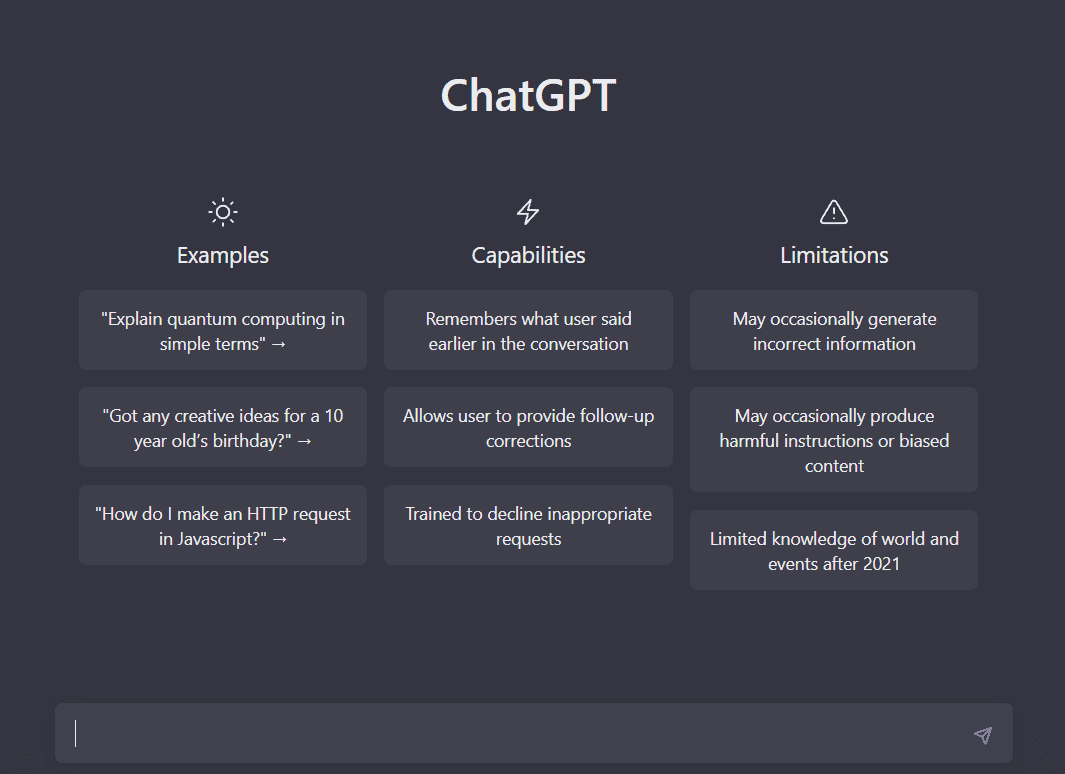
(Source: OpenAI)
Benefits of ChatGPT for email marketing content creation
1. Efficient and scalable tool for human copywriters
ChatGPT can generate a 1500-word blog post in a few minutes compared to the 4-6 hours a human writer require to conduct research, verify the information, and write text. For instance, AI-powered tools may come in handy when a trending topic appears, and you want to write about it faster than your competitors.
What’s more, ChatGPT is a highly scalable solution that learns from its mistakes (but still repeats them sometimes) and can align with your brand voice. The more brand information you share, the faster ChatGPT can generate relevant content. For example, you can train the program to answer common questions about your organization by offering detailed information about your products or services.
2. AI writing assistants are a cost-effective and reliable solution
Robots don’t require big paychecks and can’t request a sick leave right before an important release. What’s more, the basic version of ChatGPT is free for everyone. If you want the program to be available when demand is high or need faster response speed, you can always upgrade to the paid subscription plan ($20 per month).
3. Robot writers can help overcome writer’s block
If you produce written content, you probably know all about the creative slump and blank page anxiety. Well, AI can help you overcome it by generating content ideas or providing detailed outlines.
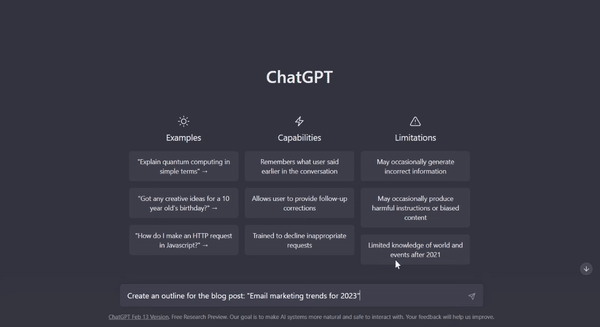
Issues of ChatGPT for email marketing content creation
1. Doubtful quality and lack of fact-checking compared to human writing
Let’s be honest, you can’t make groundbreaking discoveries in email marketing by using AI writing tools. For now, machines analyze content from online resources relevant to your prompt and process it to create a new text. Such content won’t be considered plagiarism by plagiarism detection software, but these texts still don’t provide additional value or offer unique insights for your business.
Another issue you may face when using AI is fact-checking. When human content writers work on their texts, they usually spend some time verifying the information by analyzing many trustworthy resources. AI tools learn from what’s on the web, where you can find lots of misinformation. ChatGPT generates well-structured texts and provides convincing arguments, but it can still be inaccurate.
What’s more, if you want to use ChatGPT to gather actual statistics, you will find one more problem here. I asked it to show me some email marketing stats for 2022, and it turned out that ChatGPT has access to data from 2021 and earlier. The program also doesn’t provide links for statistics (compared to Microsoft Bing AI based on Open AI’s ChatGPT), so you still have to do some fact-checking on your own to ensure this data is up-to-date and accurate.
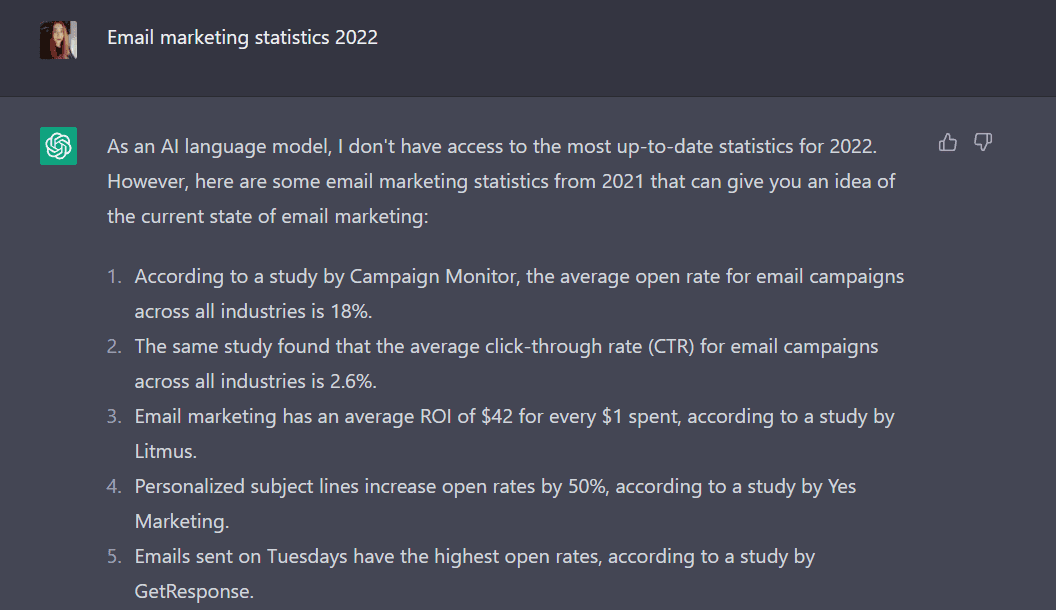
2. Google marks AI-generated content as spam in search engine results pages
According to John Mueller, Google’s Search Advocate, texts generated with the help of AI writing tools are considered spam. He recommends writers benefit from AI by becoming more efficient in their writing, proofreading texts, and checking spelling or grammar instead of generating content from scratch.
Make sure you follow the E-E-A-T standards (expertise, experience, authoritativeness, and trustworthiness) while editing texts generated by AI-powered tools to gain Google’s trust.
There are lots of free and paid AI detection tools out there. I asked ChatGPT to write an Instagram post and used two free random detection tools to check if my content was generated automatically.
Here are the results:
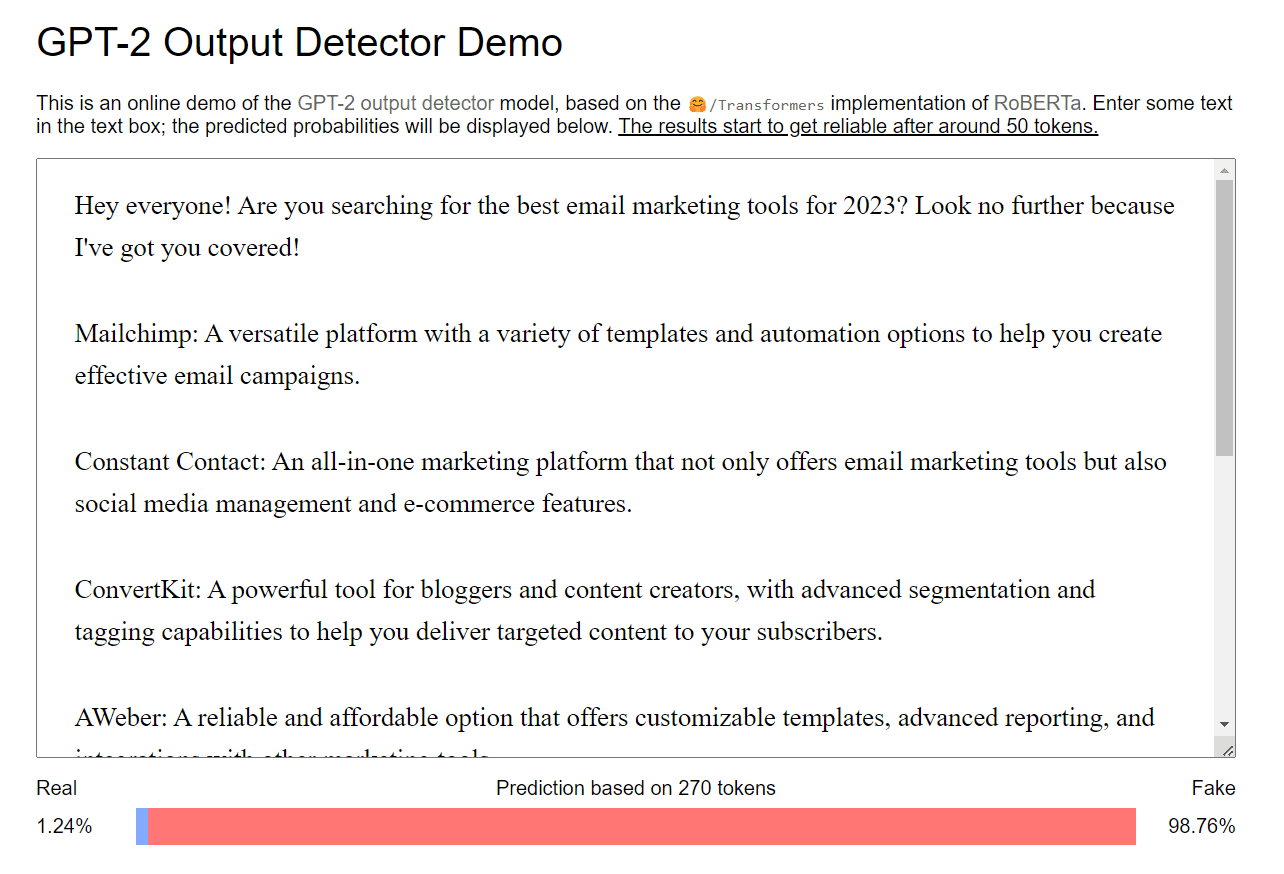
(Source: GPT-2 Output Detector)
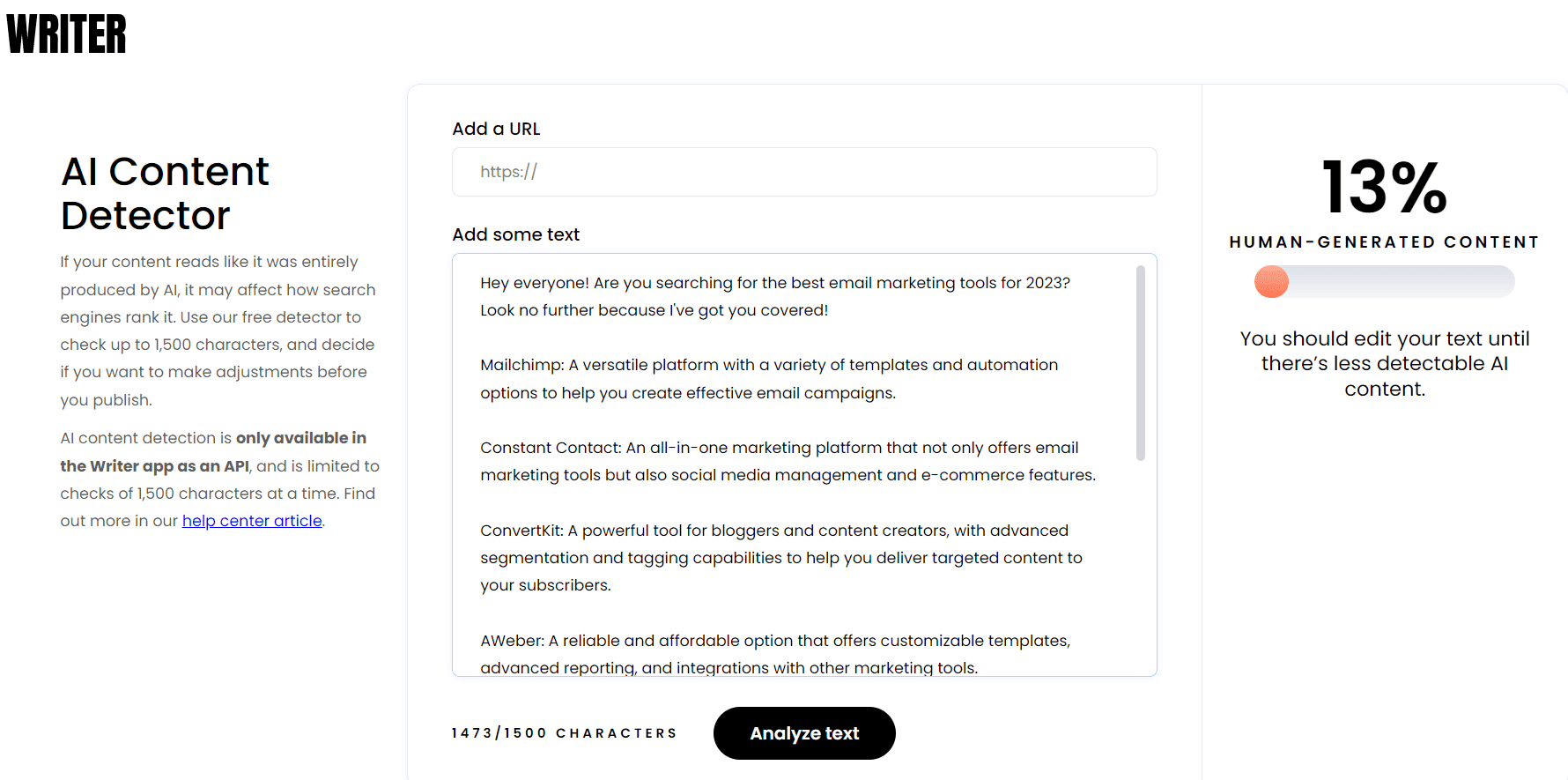
(Source: Writer.com)
As you can see, AI detection software can identify whether your text was written by a machine. I recommend you be careful with AI-generated content — don’t use it to create the entire piece from scratch, pay attention to editing, and choose one of the numerous detection tools to ensure your text is authentic and has a human element.
Protip: Generative AI models like ChatGPT can’t help you ensure credible content with optimum quality. Moreover, there is a chance of Google flagging it as spam. The Generative-AI model may also lack the expertise and creativity to reflect the human element in it.
The best way to tackle this issue is to check the AI-generated text using an AI content detector and analyze its results. After analysis, make necessary additions and modifications to it. It will help you add a touch of empathy, creativity, and human voice to the generated content, and you will be able to avoid spamming by Google.
3. Lack of expertise and creativity while creating content
When human content writers create any text, they rely on their audience’s needs, expert industry knowledge, empathy, real-life experiences, innovative ideas, and more. AI writing tools utilize existing content created by millions of writers to generate new text. That’s why such content seems generic and doesn’t appeal to your audience.
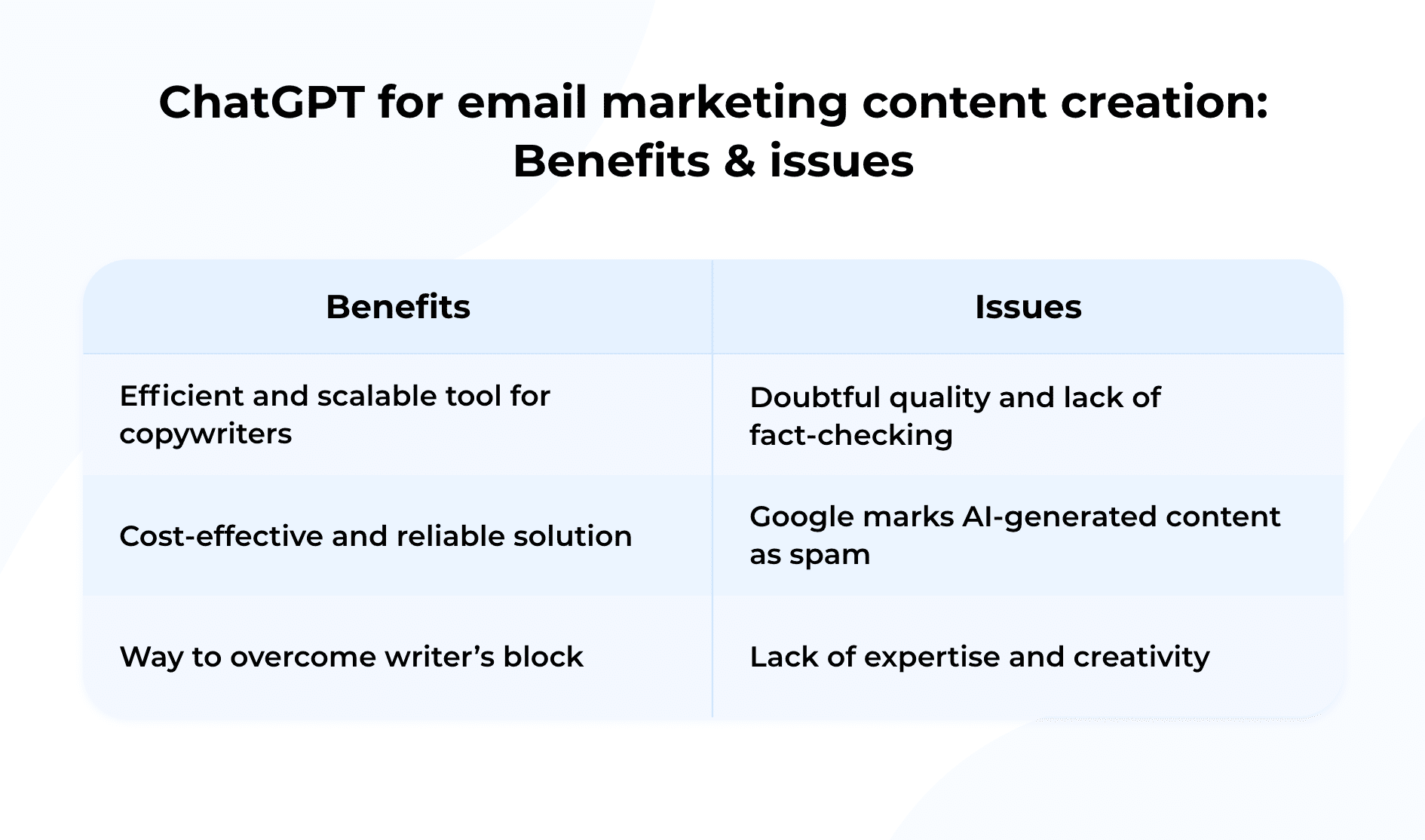
Different email marketing content types created with artificial intelligence: our insights
We asked ChatGPT to create various content types: blog articles, email subject lines, social media posts, and email template pages. Then, we compared the results with human performance.
1. Blog article
Here we used ChatGPT on the example of our blog article “Polite follow-up email sample for a request” written by our human writer. A content writer from our team spent eight hours creating this 2200-word article.
Have a look at the list of tasks included in this timeframe:
-
conducting research;
-
generating a detailed outline;
-
writing the article itself;
-
adding visual content;
-
doing SEO optimization;
-
editing and proofreading.
I used the same topic to create a blog article with the help of ChatGPT and compare the results. It turned out that a prompt like: “Please write me a 2200-word article on [Topic name]” is not a great idea. After 300-400 words, I noticed some structural issues — the bot started to repeat itself and build sentences that looked almost the same.
By trying various methods and prompts, I picked the most suitable flow:
-
offer ChatGPT texts from your website and ask it to analyze them for the tone of voice. Then request to apply this tone of voice to all future responses;
-
ask the bot to generate optimized keywords for your topic;
-
request to create a blog outline based on the generated keywords;
-
ask ChatGPT to edit certain outline sections if necessary;
-
now it’s time to ask the program to fill the sections with content (fill each section one by one to avoid structural issues. Edit if necessary);
-
work on SEO optimization;
-
add visuals;
-
edit and proofread.
Time spent: human content writer — 8 hours; ChatGPT — 7 hours.
Results: I spent seven hours creating a blog article with ChatGPT compared to eight hours the human content writer spent. But still, working with the AI tool required lots of editing and rephrasing prompts to get adequate results and add a human touch to your content. ChatGPT creates decent email samples though, so you can use it to save time.
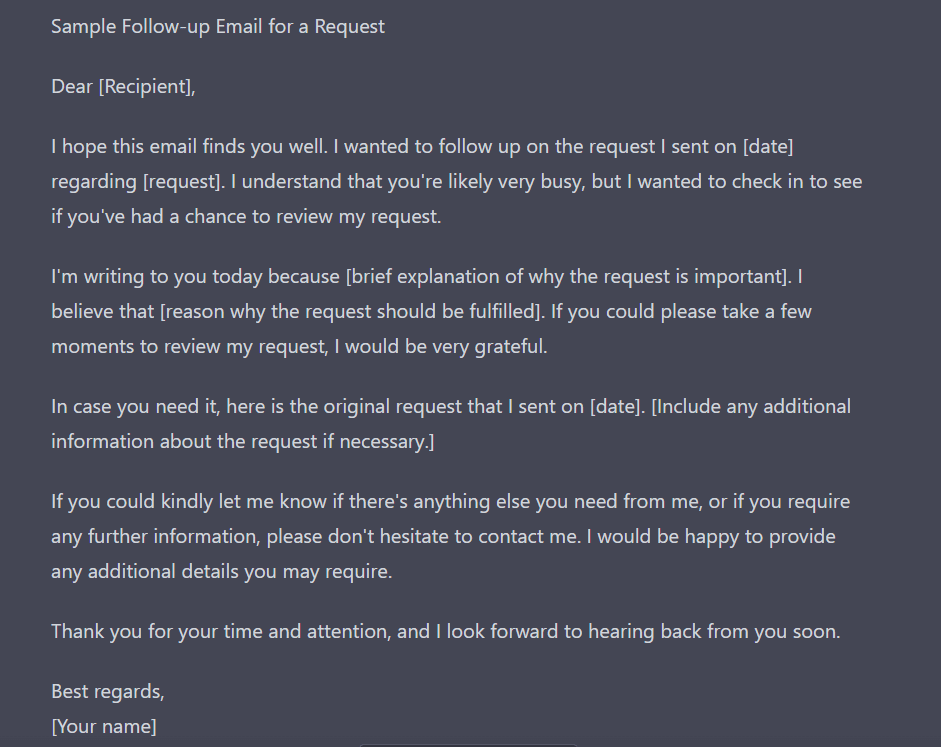
2. Email template category page
In our email template pages, you can find responsive templates and tips and tricks for numerous email types, seasons, industries, and features. We also add some information about the Stripo editor and how to make the most out of it. Here we need texts that include Stripo functionality and manuals for our users.
Now, here is where a problem emerges: even when we “feed” ChatGPT tons of information about Stripo, it still can’t describe the editor’s features the way our copywriters do.
Our content writer spent three hours creating the email template page.
Have a look at the list of tasks included in this timeframe:
-
conducting research;
-
generating an outline;
-
writing the text itself (tips and tricks, manuals, Stripo features);
-
adding images (email templates and screenshots from the editor);
-
doing SEO optimization;
-
editing and proofreading.
Then we tried to generate text for the same email template page with ChatGPT.
Here is the flow we used:
-
conduct keywords research;
-
request ChatGPT to create an outline based on the necessary topics and provided keywords. Edit if necessary;
-
ask the program to fill the sections with content;
-
edit texts;
-
describe Stripo’s functionality and add manuals to show how to use the editor (without ChatGPT).
Time spent: human content writer — 3 hours; ChatGPT — 3 hours.
Results: ChatGPT creates rather generic texts for email template pages that can be suitable if you just start filling your website with content. In our case, the bot couldn’t describe all of Stripo's technical features or offer tailored manuals to teach users how to use the editor to the fullest. As a result, creating an email template page with ChatGPT took three hours — the same amount of time our human content writer spent writing this content from scratch.
3. Email subject lines
Our email marketer split the audience 50/50 to run an A/B test. The first group received an email with Stripo news equipped with a subject line created by a human. The second group got the same email but with a subject line generated by ChatGPT.
Human subject line: What's new in Stripo? Find out in our digest.
AI subject line: [News from Stripo] All the Latest News, Blogs, Email Templates, and Releases.
Open rate: human email marketer — 29%; ChatGPT — 28.4%.
Results: ChatGPT is an excellent tool for creating short-form content like subject lines. It generates various options so you can pick the perfect one and offers relevant emojis.
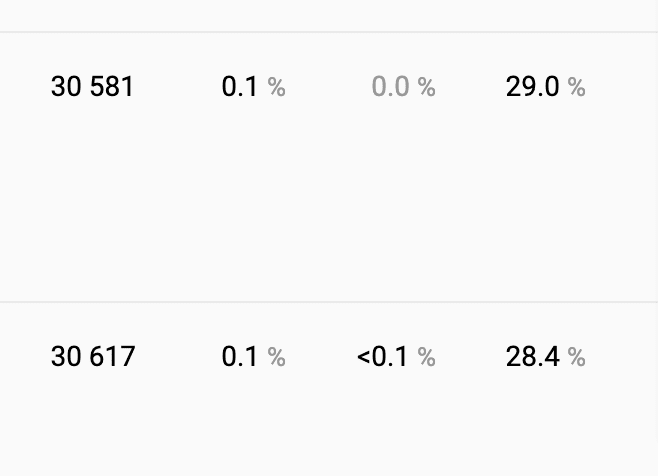
4. Social media posts (for personal branding)
For this experiment, we used ChatGPT to create posts for our CMO’s LinkedIn account, where he shares his experience and valuable insights on marketing. Here we provided the bot with a draft post about using AI tools for a marketing strategy.
Here is the draft post:
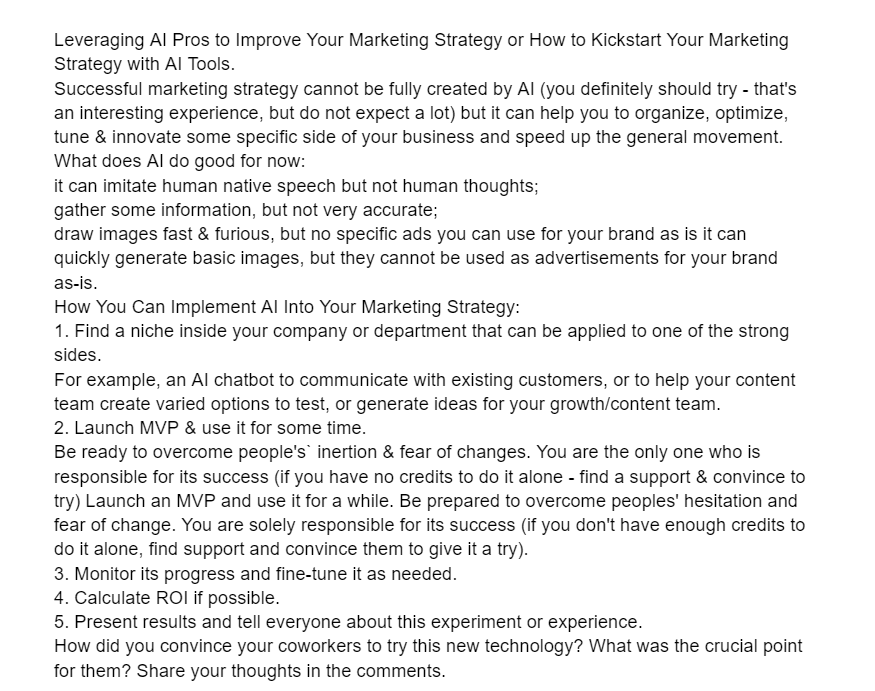
Usually, our CMO writes blog posts, and human writers polish these texts to make them more structured, shorten some sentences, and correct all typos. This time, we asked ChatGPT to work on the original post.
Here is the result ChatGPT offered:
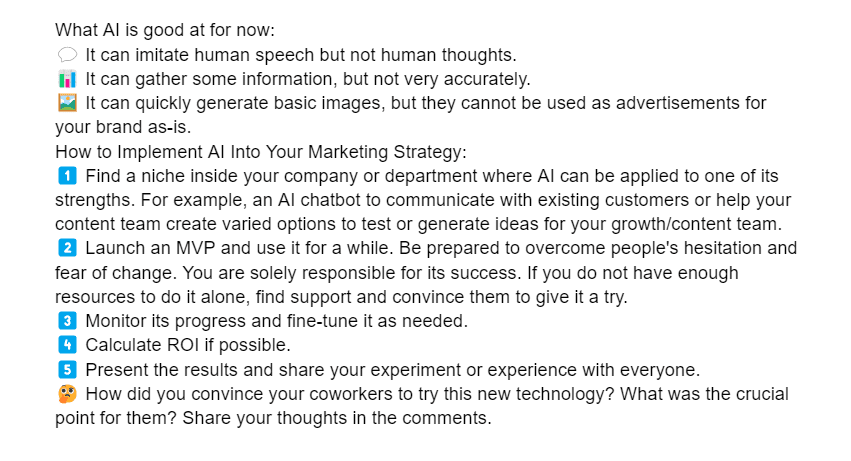
Results: it turned out that ChatGPT is an excellent assistant that can transform a bunch of your ideas into a well-structured and error-free social media post with the necessary tone of voice and relevant emojis in a few seconds.
Our SMM manager also uses ChatGPT to get ideas for unique posts for every platform to avoid cross-posting. The bot is a great help to make texts more engaging and add catchy call-to-actions.
The key is to work on your prompts — provide context, use references and examples if necessary, specify the length of your post, and define the tone of voice.
5. Glossary
In our glossary, you can find basic terms concerning email marketing. Instead of the creative texts we tested above, here we need more technical and educational content. For this experiment, we took the terms “Affiliate marketing” and “Dynamic email.”
The first entry was written by our content writer. She spent 3.5 hours creating this piece.
Have a look at the list of tasks included in this timeframe:
-
conducting research;
-
generating an outline;
-
working on the text;
-
doing SEO optimization;
-
editing and proofreading.
For the second entry, we used ChatGPT and then edited its answers.
Here is the flow we used:
-
conduct keywords research;
-
ask ChatGPT to generate an outline based on the necessary topics and provided keywords. This step saved us half an hour;
-
ask the program to fill the sections with content;
-
edit texts.
Time spent: human content writer — 3.5 hours; ChatGPT — 3 hours.
Results: ChatGPT saves time on research and provides a well-structured outline. But it still has a few downsides. For instance, if you need to add three definitions to the section, the bot often starts sentences with the same words over and over. Sometimes it also fills two different sections with almost identical content.
Why can’t AI replace content writers?
As you can see, AI writing tools aren’t a threat to professional content writers. AI can become your assistant that helps you speed up routine tasks so that you can focus on more essential objectives. I even asked ChatGPT about it, and robots don’t lie:).
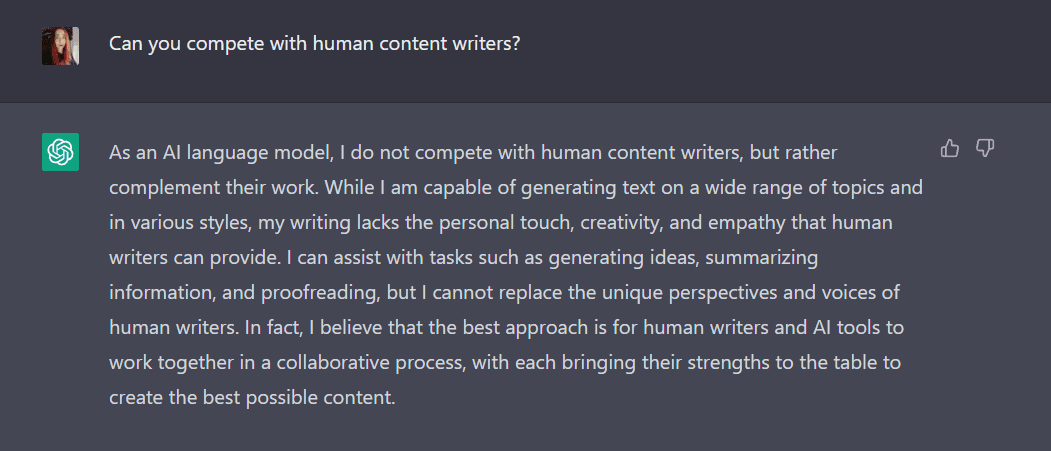
1. Empathy
A good text evokes emotions in its readers, helps brands build a connection with the audience, and makes customers feel like you have read their minds. It’s difficult for AI to relate to humans as it can’t replicate our emotions, so sometimes, content created by these tools seems impersonal and generic.
When your readers start noticing such a “robotic” tone of voice and detached content, they may lose trust in your company and take their business to your competitors (yes, even if your products or services are impeccable).
2. Creativity
I suppose we can all agree that writing is not all about putting words in sentences. It also includes creative ideas, self-expression, style, persuasion, and more. It’s impossible for AI-powered writing tools as they can only create content based on the provided data.
Even when you ask ChatGPT to generate some ideas, they won’t be 100% unique and creative — the machine processes a vast amount of data, mixes it with other sources, and offers you the most suitable output.
3. Tone of voice
Human writers can create strategic content tailored to the needs of a certain company and audience. They can align their writing with numerous styles, tones of voice, and purposes. You can train ChatGPT by offering it texts from your website and requesting to analyze them for the tone of voice. Then you can ask it to apply this tone of voice to all its future responses. But still, the bot’s understanding may not always be accurate as it’s limited by the data it was trained on.
How can content writers use AI as an assistant?
ChatGPT has a few downsides, but it’s still a great tool to help writers save time. Here are some ways to use it in your workflow:
1. Idea generation (in a dialogue form)
This tool is called “ChatGPT” for a reason, isn’t it? So, bombarding it with requests to write you a piece of content might be an option, but not always the best one. Try to actually talk to the machine — ask it a question and start a conversation.
Such a method works great for those struggling with a lack of creative ideas. Besides making direct requests, you can develop a dialogue by asking ChatGPT clarifying questions or even arguing with it.
I asked ChatGPT to generate ten blog post ideas for the Stripo blog about email marketing and provided some information about the company. After I got a list of topics, I asked the program to explain why these topics would be helpful to my audience.
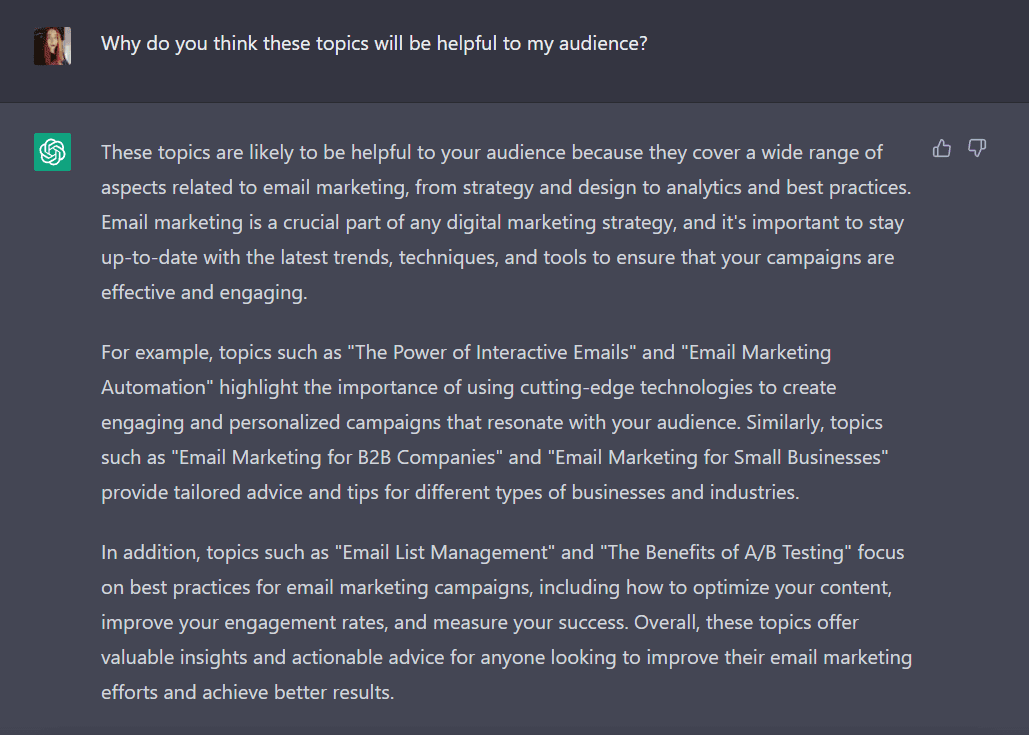
If you are not looking for content ideas but need help with business questions, ChatGPT can come in handy too. The bot offered me some ideas to attract more readers to the blog :).
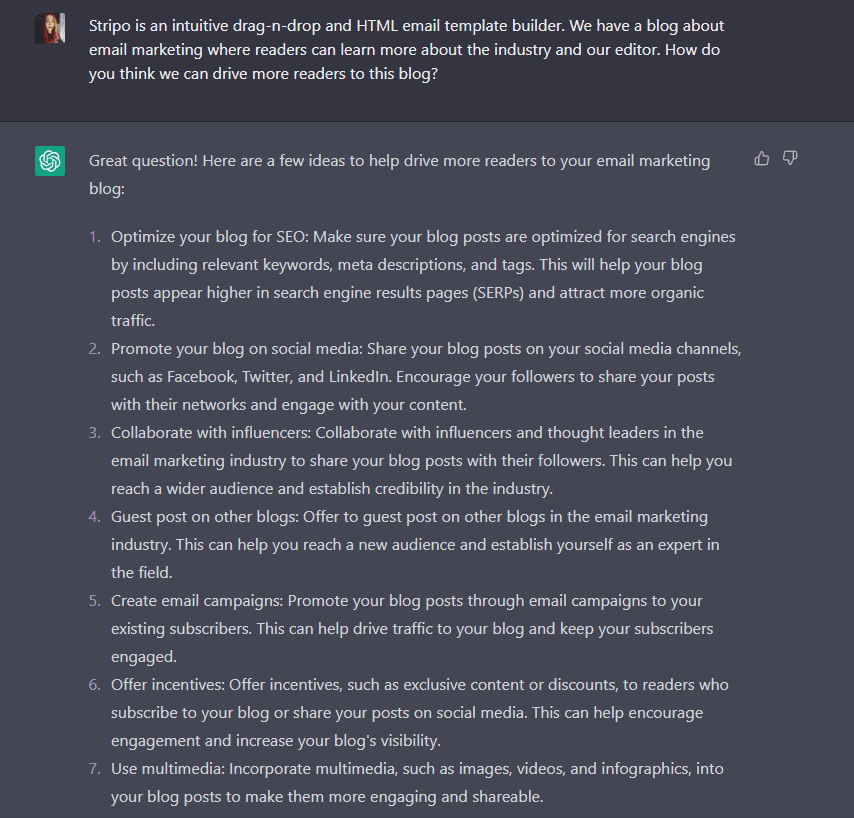
2. Editing and proofreading
AI-powered tools can enhance your writing beyond just correcting grammar and spelling mistakes. They can help you get rid of filler words, suggest using synonyms, rewrite passive voice sentences into active ones to make writing more direct, and eliminate wordiness.
Use ChatGPT as a junior assistant to speed up the editorial process and consider its ideas as a starting point. But still, remember that you have to stick to your brand’s tone of voice and align your texts with a style guide, which should include guidelines on word choice, sentence length, pronouns, the use of slang, etc.
I asked ChatGPT to proofread and edit the piece you have just read. Here’s what I got:
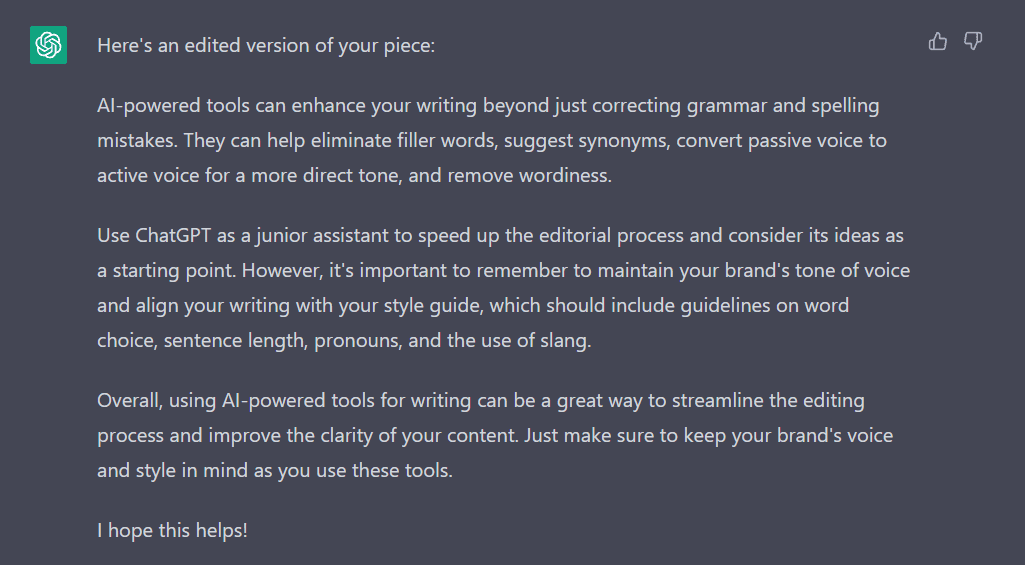
It also added a paragraph describing AI-powered tools as a great way to streamline editing and improve content clarity. Well, if you don't give credit to yourself, no one will do it for you, right? :)
3. Creating short-form content
I found ChatGPT a great help for generating short-form content like product descriptions, ad copies, email subject lines, call-to-actions, social media posts, email samples, and meta descriptions. You still have to edit such texts to add a human touch and align them with your brand’s tone of voice, but it will take less time than creating an entire piece from scratch. As a result, you can save time on routine tasks by delegating them to specific software.
4. Generating outlines for writers
If you manage a big team of writers, it can be challenging to come up with dozens of outlines for everyone — you should research each topic, check competitors’ content, work with SEO tools requirements, and gather all the information into detailed and structured outlines.
I tried different approaches, and here’s my favorite one:
-
define a topic for your blog post;
-
ask ChatGPT to generate optimized keywords for this topic;
-
request to come up with a list of titles based on the keywords generated before;
-
choose the perfect title and ask the bot to create a blog outline based on the generated keywords;
-
request ChatGPT to edit certain outline sections if necessary.
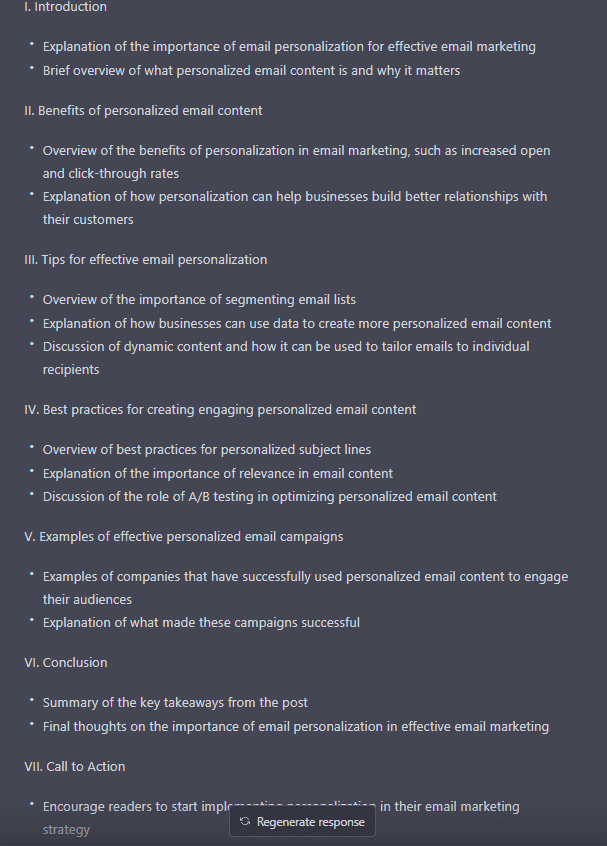
Wrapping up
AI-powered tools are not advanced enough to replace human writers and produce strategic content aligned with your brand voice, but you can use them as your assistant to speed up routine processes. A specific prompt is one of the main secrets of using tools like ChatGPT to your advantage. I recommend you develop a dialogue with the bot, provide more info about your company, ask it more questions, and even disagree with it. The more we train AI tools, the better results they will bring to your business.
After our experiment, it turned out that it’s better to use ChatGPT for:
-
idea generation (in a dialogue form);
-
editing and proofreading (consider its ideas as a starting point);
-
creating short-form content (email subject lines, call-to-actions, social media posts, and email samples);
-
generating outlines for writers.
It seems that AI-powered content writing tools aren’t a threat to professional human writers. On the contrary, now we have a personal assistant who is always willing to learn and make the writing process much more fun and time-efficient. The key is to use it sparingly and write the proper prompts.





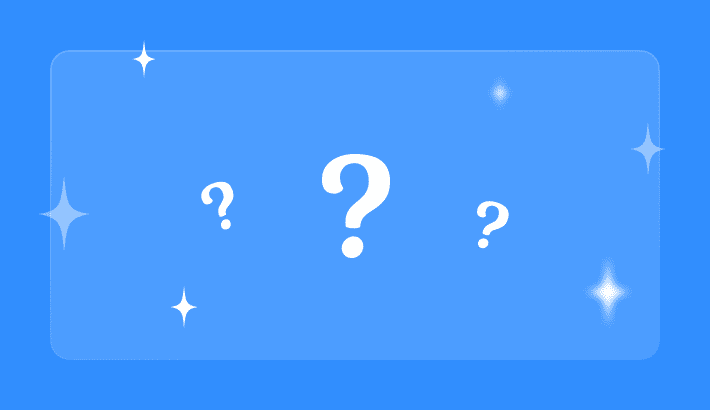

0 comments